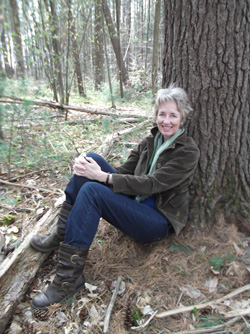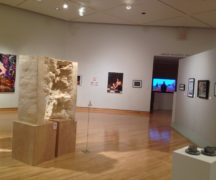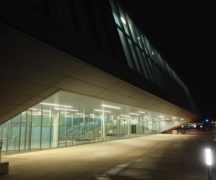By FRANCES BRENT
Karen L. Osborn, Distinguished Visiting Professor of Writing at BGSU addressed a young audience gathered on the worn pews of venerable Prout Chapel about her creative “Life on Mars.” The haircuts, hair colors and head coverings were varied, as befits a gathering of the artistic young.
It was a comfortable audience for Osborn whose novels explore the difficulties of being young, not in isolation, but rather as part of the continuum of life. (The audience had its mature component too.) The evening was a meditation on the craft of creative writing, with learned and meaningful references to Chekhov, Virginia Woolf, F. Scott Fitzgerald, Robert Frost and Walt Whitman. Interesting, insightful, intellectual and all tied to the Niagara River banks where she grew up – tuned to a dramatic natural environment and within a family that wanted to explain it.
The depth, heart of Osborn’s writer’s craft developed as she grew up a “space child” surrounded by a scientific family that didactically and enthusiastically quantified and categorized everything. All this science was the other half – the balance of her creative world. This grounding in the observed world was a platform for her to start wondering about the unseen, to be curious about what could not be explained about human behavior. She is not afraid to explore the Chinese Boxes of the human heart – to follow one unanswerable question to the next as plot and characters develop. “Curiosity, vision and courage,” are required in her view.
Karen Osborn, author of four published novels of great individuality, is a successful professional writer. She has the requisite list of foundation grants, awards, small magazine publications, and artists in residence postings that keep writers going. “Patchwork” was named a New York Times notable book. The recent “Centerville” was the fiction choice of The Independent Publishers Books.
Osborn describes “Centerville” as a cyclone. The human effect and transformations that circle out from the core explosion of a bomb left by a vengeful husband in a small town drugstore are part of the shockwave. All seems idyllic on a hot summer day in the still innocent sixties.
There is a blast and the innocent are dead. It is the living that are left wounded, with lives, selves, understandings, families, friendships, assumptions and status exploded into new patterns. The prose moves with an underlying driving, but subtle, rhythm. The reader suddenly realizes a breathless feeling. Osborn admits to being influenced by the King James Bible of her youth, the river sounds she grew up with and her recent reading of Martin Luther King Jr. sermons.
The core questions of who is this man, named George Fowler, and how could he do such a thing as make and explode a bomb are never really answered. The interest is in the collateral damage. A popular minister, happy in every way, realizes he is a hollow man. A teenager comes to terms with more than her father’s death. The perfect housewife is forced into introspection and a wonderfully creative coping mechanism. A policeman, in all ways dutiful, realizes he has lost touch with his humanity. Through all the stories Osborn has a fine ear for dialogue, the rhythm of family life, the pace of a small town summer.
Here, as in the earlier “Between Earth and Sky” Osborn follows her credo of grounding the story with concrete observations and letting characters go where they must. Here we have a pioneer tale set after the Civil War moving through generations into the present. It is really a love affair with the mountains and desert of New Mexico.
Osborn, who regularly teaches at New England colleges near her home, has her own take on being a visiting professor. The light teaching load is pleasant, the students interested. Her children grown and gone, husband needs minimal tending, and we are talking just four months absence and home for spring break. Domesticity and the distractions of community are left behind – leaving her time to concentrate on writing. Osborn has made great progress on her work in progress, “Music Book” set in the fifties and steeped in music, inspired by a recent NPR class on the history of the orchestra.





